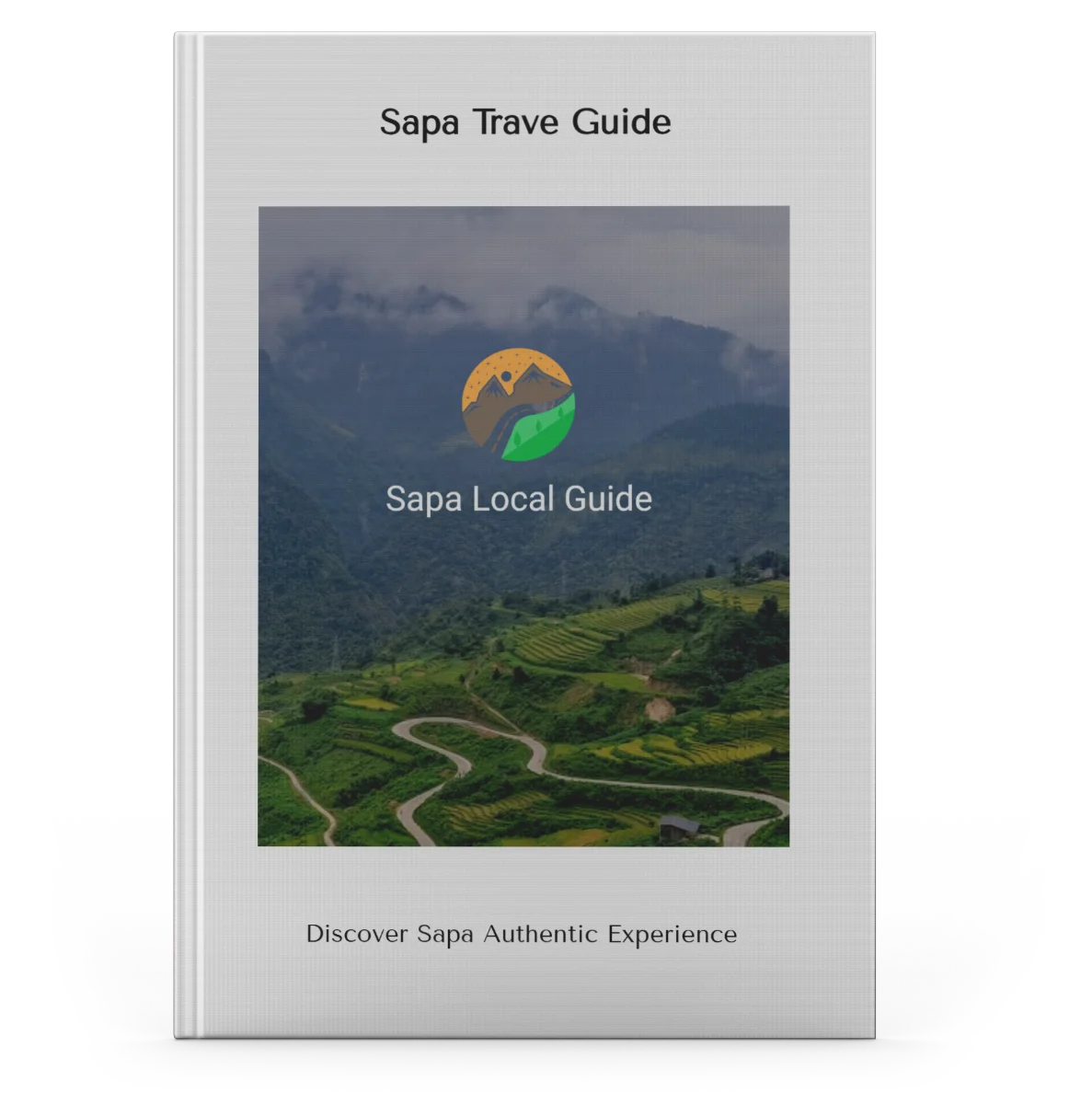![]()
Authentic Experience of Sapa
Explore Sapa with local guides for personalized tours. Enjoy the best times to visit, from vibrant rice harvests to serene winter views. Book your adventure now
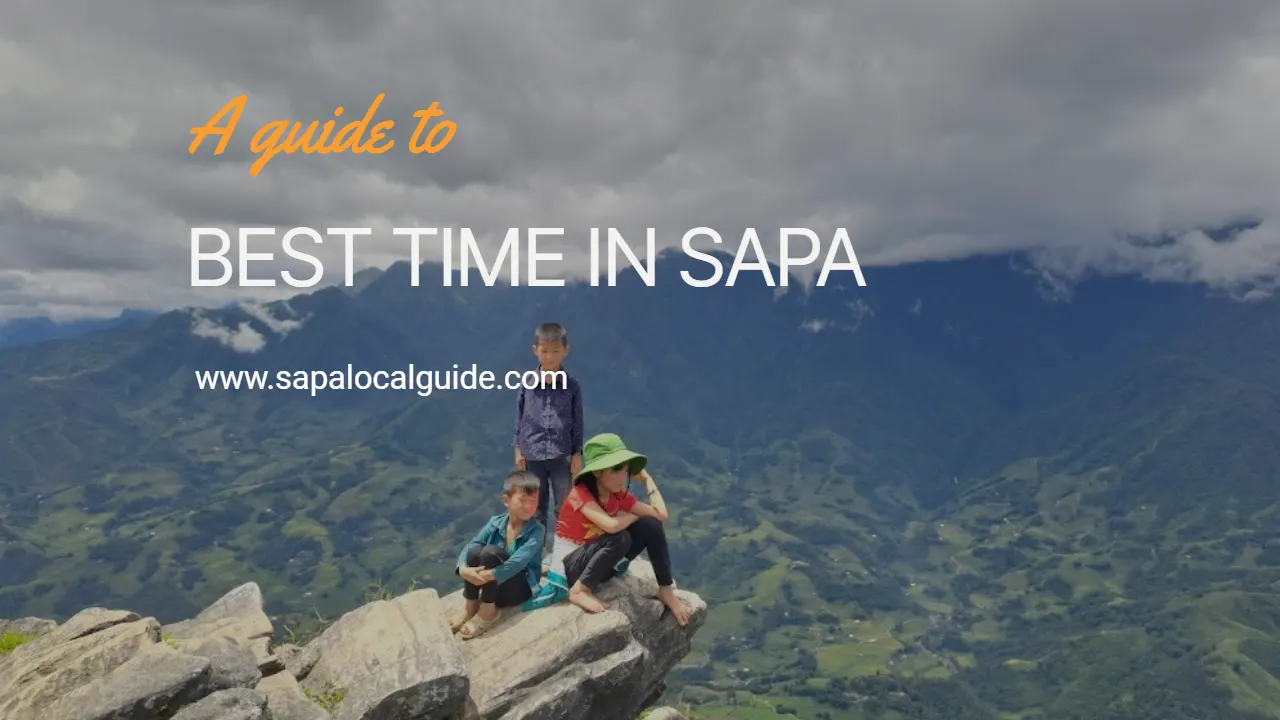
Traveling to Sapa at the right time is very important because it can greatly affect your trip. In some months, the rice fields aren't beautiful; in others, it rains a lot, and during another time, it can get really cold. That's why it's important to check the weather in Sapa before you go. This way, you can pack the right clothes and know what to expect.
The best time to visit Sapa is from March to May and September to November. August is the top month because the rice is ready to harvest. During this time, the terraced fields glow with bright yellow and golden colors, creating a stunning view.
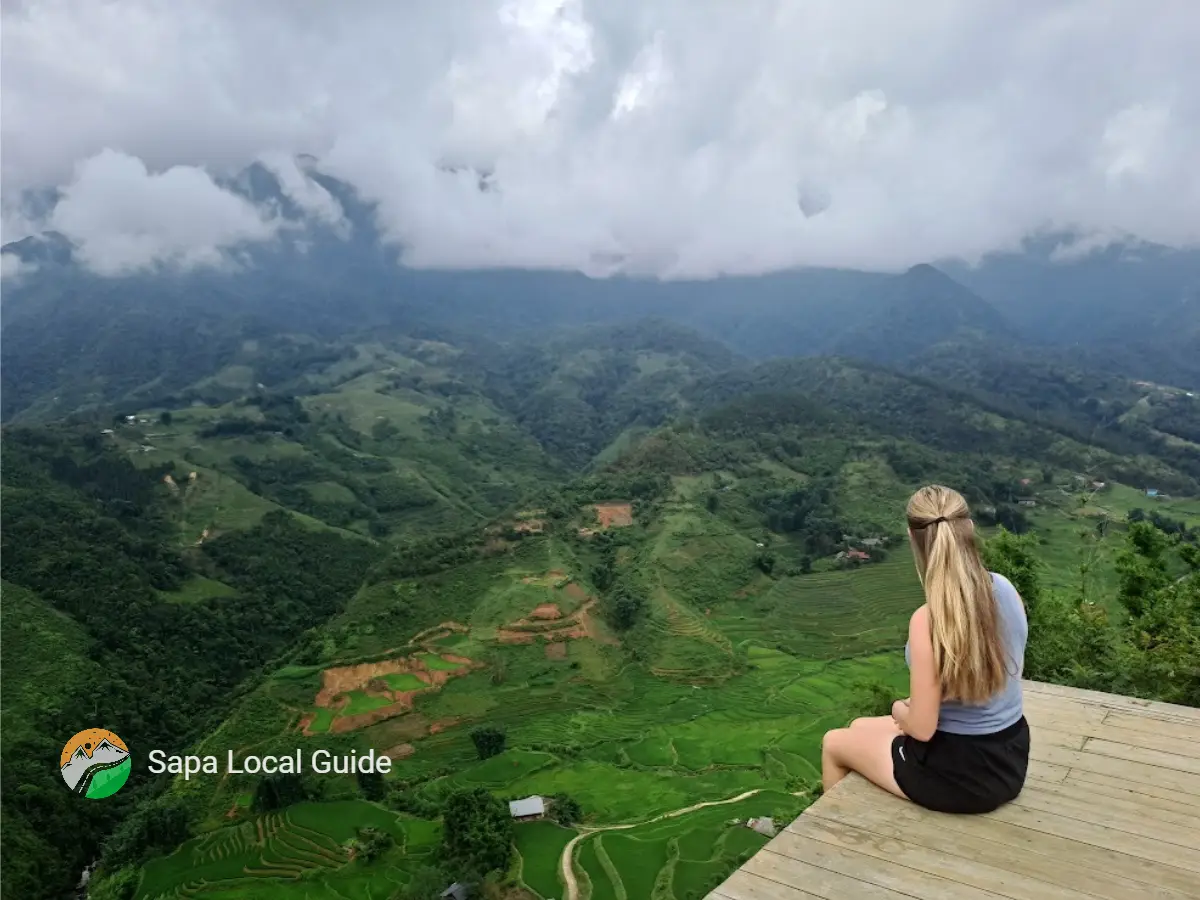
Monthly Weather Overview
| Month | Rainfall | Temperature |
| January | 23 mm | 5°C to 10°C |
| February | 30 mm | 5°C to 15°C |
| March | 100 mm | 8°C to 20°C |
| April | 140 mm | 10°C to 21°C |
| May | 200 mm | 20°C to 25°C |
| June | 307 mm | 21°C to 26°C |
| July | 461 mm | 21°C to 28°C |
| August | 430 mm | 21°C to 30°C |
| September | 268 mm | 20°C to 29°C |
| October | 91 mm | 16°C to 23°C |
| November | 56 mm | 16°C to 20°C |
| December | 26 mm | 8°C to 10°C |
Before planning your trip, check the latest weather updates on AccuWeather to stay prepared!
March – May: The weather is warm and dry, making it ideal for Local trekking and outdoor activities.
June – August: Expect rainy weather and lots of Vietnamese tourists.
September – November: Cool, dry weather is ideal for photography and hiking with local guides in Sapa.
December – February: It's cold, but there are fewer tourists, offering a quieter experience.
=>Read more Weather and climate in sapa Here.
Spring lasts from early March to late May. The weather gets warmer and nicer after the cold winter. The landscape turns greener than in other seasons, making it a perfect time for a Sapa Local Guide trekking tour. You can enjoy stunning views while hiking in the mountains with ideal temperatures not too hot, not too cold. Often, the sky is clear, giving you great chances to take amazing photos.
In addition to the pleasant weather and green scenery, it's also cherry blossom season. Along the roads, in fields and gardens, you'll see lots of white and pink flowers blooming.
The summer months of June, July, and August can get very hot. Temperatures can rise to around 25 degrees during the day. It also rains almost every day, and while the rain usually lasts for just an hour or two, it's often heavy enough to turn paths and dirt roads into muddy trails. The heat and rain can make a local guide trekking in Sapa less enjoyable.
However, the landscape is incredibly green, and the rice fields grow during the summer. The waterfalls in Sapa are at their best during and right after the rainy season, with a lot of water flowing down the mountains. So, even in summer, you can still enjoy breathtaking views.
Although summer isn't the ideal time to visit Sapa, the town can get busier on certain days, especially on weekends. Many Vietnamese families travel during the summer because their children are off from school.
As the rain decreases in September, Local trekking and getting around become easier and more enjoyable. The daytime can still be warm, but the intense summer heat is gone. August and September are the months of the Sapa Local harvest season, when the rice fields in Sapa are at their most beautiful. The golden rice fields stretch across the local guide mountains like ribbons, creating breathtaking views. This makes autumn the best time to visit Sapa.
Later in the month October and November the temperature drops gradually, making it milder during the day time and cool at night. This is again great weather for a Local trekking. In addition the roads are more passable and safer for a Adventure motorbike tour.
=>See the adventure motorbike tour Here.
From November, the days start to get colder, and winter lasts until the end of February. November is still a nice time to visit Sapa, but December and January are the coldest months. During these months, temperatures can drop to freezing, and there’s even a chance of snow. The cold weather and the bare rice fields make it less ideal for a local trekking. If you still plan to hike, make sure to wear the right clothes. Remember, not all accommodations in Sapa, especially the basic homestays, have proper heating, so it can get very cold. Even if it doesn’t snow, there’s still a chance of rain, which can make the trekking paths muddy and hard to walk on. Also, during winter, the mountains are often covered in clouds and heavy fog, which might block your view of the unique landscape. However, it can also create some beautiful scenery. From February, the weather starts to clear up, and temperatures begin to rise a bit.
The harvest season in Sapa lasts from August to early September or the same time in early August. This is the best time to visit because the rice fields turn golden and look like ribbons winding along the mountains. The best way to see them is by taking a Sapa Local guide trekking tour from one village to another.
The Best Places To See Terraced Rice Fields Here.
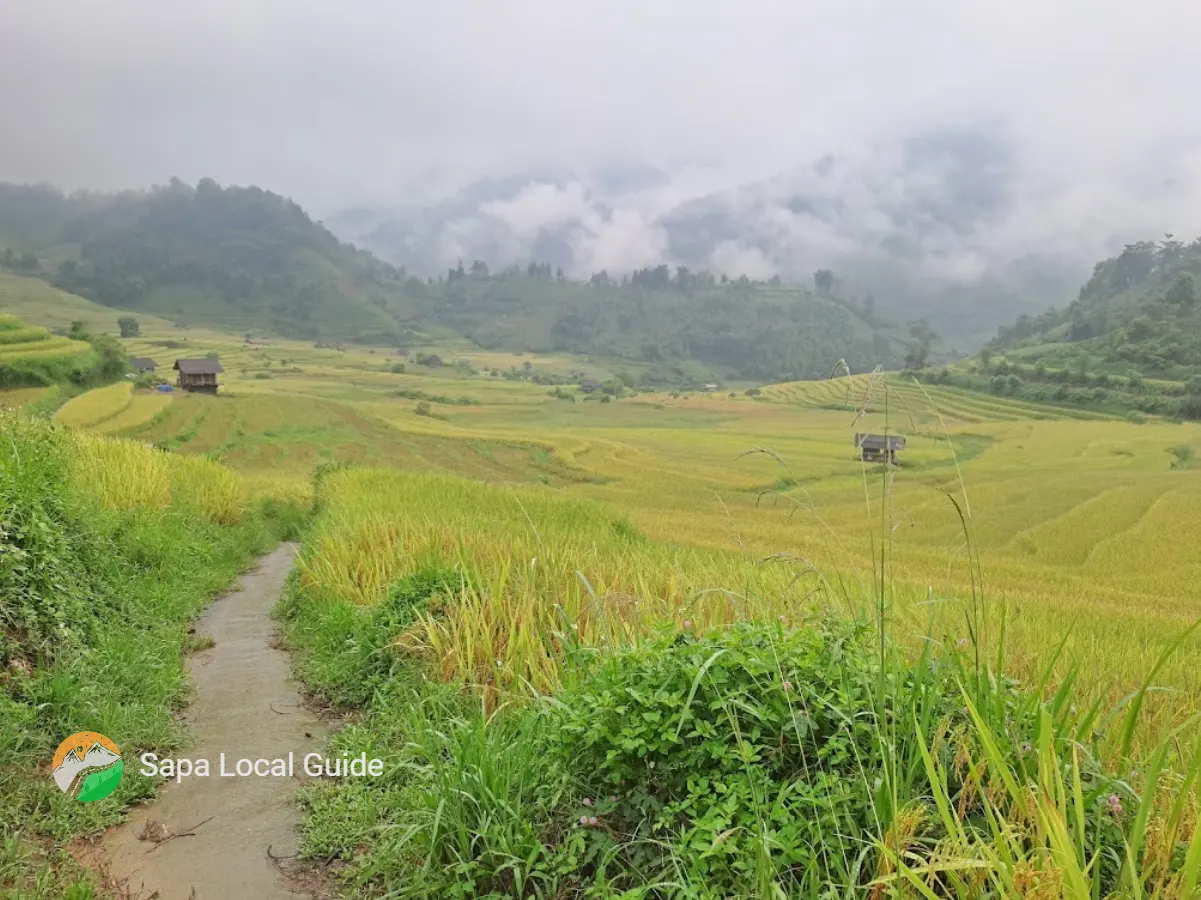
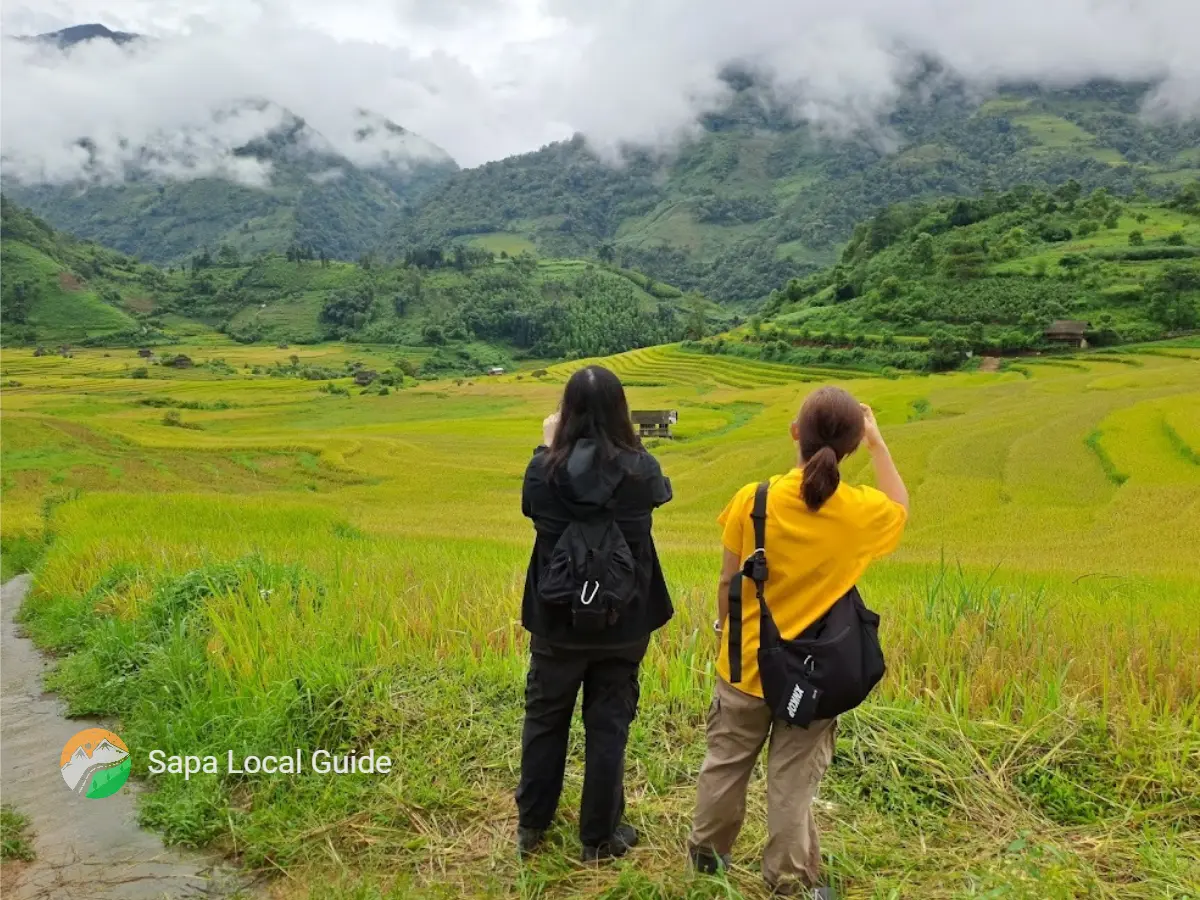
From March to early May, Sapa enters its watering season. During this time, the Local terraced rice fields are flooded to prepare for planting. These fields turn into huge mirrors, reflecting the mountains and sky. It's right after the harvest, making it the perfect time for photographers to capture Sapa's beauty.
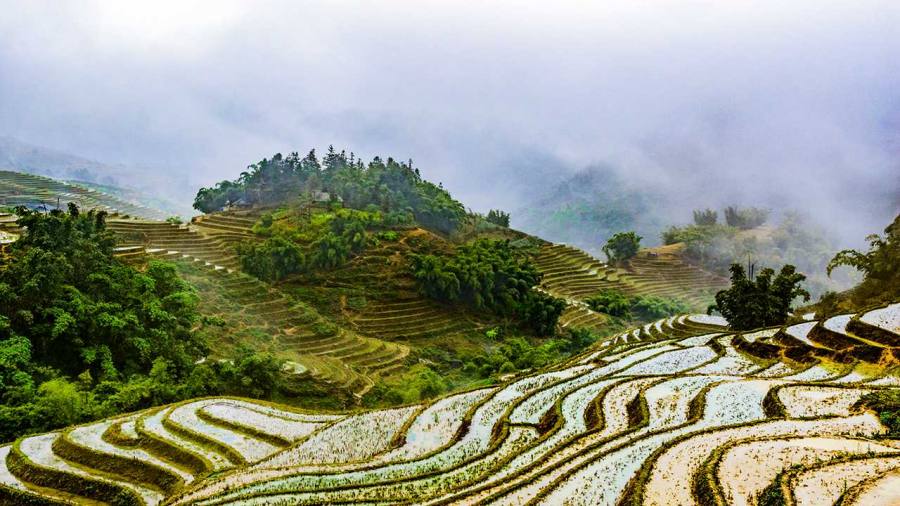
If you’re visiting Sapa, you might want to see Fansipan, the highest mountain in Vietnam. If you plan to a Local Guide climb Fansipan, spring or autumn are the best times. During these seasons, there’s less rain and the weather is not too cold or too hot. If climbing isn’t for you, you can always take the cable car up. In winter, Fansipan is the best place to see snow.
When is harvest season in Vietnam?
Harvest season is from August to early September.
What is the best time to visit Sapa?
The best times to visit Sapa are in spring (March to May) and autumn (September to November).
When is the rainy season in Sapa?
Sapa's rainy season is from March to September, with the heaviest rain in June, July, and August.
When is the best time to visit Fansipan?
You can visit Fansipan any time of the year, but it can be cold and cloudy in winter.
When does it snow in Sapa?
Snow in Sapa is rare but can happen in December and January.
Sapa 1 Day

1 day experience,Rice fields, valley, villages. Moderate to challenging, Private,Vegan-friendlyCultural immersion & active adventure
Motorbike Tour

1 day experience,Rice fields,waterfall.Challenging,Private tours friendly Cultural immersion, active adventure
Sapa 2 Days

2 days 1 night experience. Moderate to challenging, adventure. Mountains, valleys, rice fields and villages. Vegan-friendly
Sapa 3 Days

3 days 2 night experienc, Moderate to challenging. Mountains, valley, rice fields & villages. Private tours. Vegan-friendly
Looking for a local tour or service related to this article? Let us know We specialize in small group tours and customized private tours to give you a real and personal experience. Whether you want a half-day tour of Hanoi, a long trip across Vietnam or a private driver, we can help you. As local experts, we pride ourselves on creating amazing trips that fit your interests and schedule.
Complete with itinerary, destinations, food, accommodation and tips!
